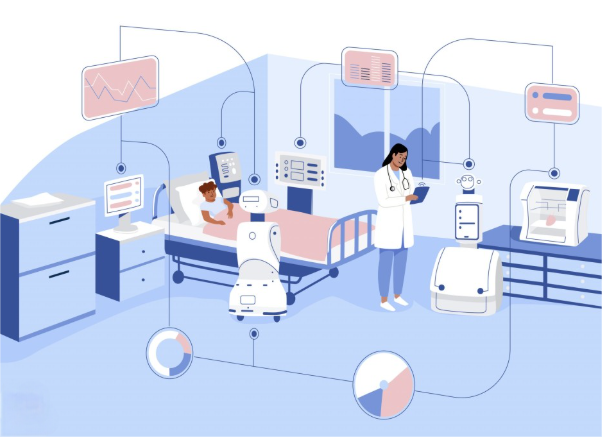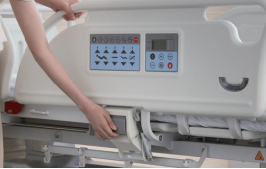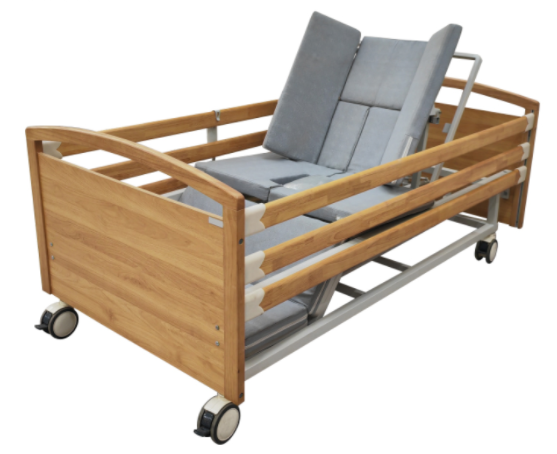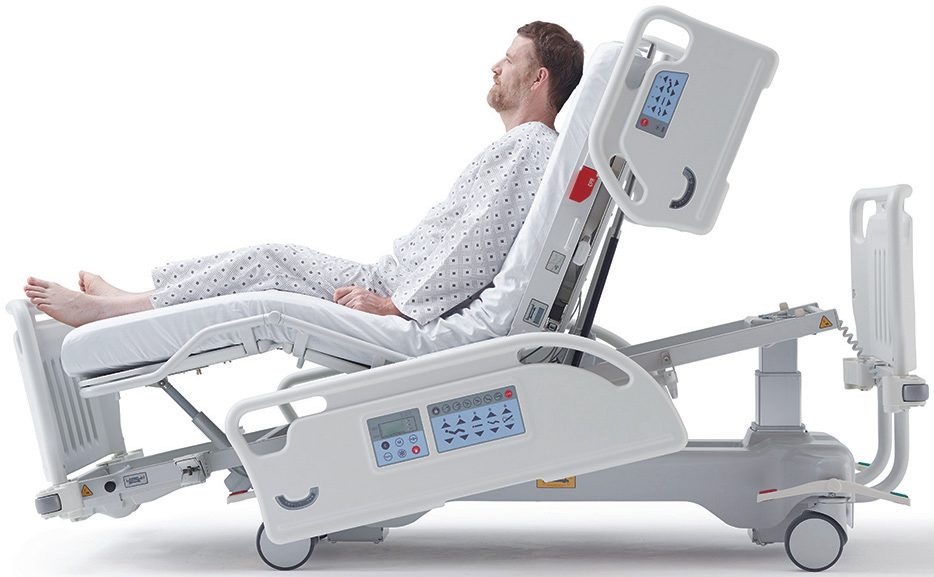The Future Of Hospital Care From Medical Bed Supplier With Smart Technology
How medical bed supplier with smart technology leading the future of hospital care?I’ve often wondered how hospital beds became so smart nowadays. Lots of people talk about high-tech healthcare. Because of this, I believe we might overlook something significant. Hospital beds themselves are now packed with technology. I’m talking about sensors, alerts, and even features that operate automatically. From my experience and what I’ve seen, these beds can help prevent falls. They can also help stop bedsores before they even begin. I find that quite amazing, don’t you? It appears hospitals are investing more money than ever in these advanced beds.

Automated Fall Prevention and Real-Time Alerts
I find that systems for automated fall prevention and real-time alerts are changing hospital safety. This is important as more older people need care and hospitals focus on value. The market for these smart hospital beds was about $2.5 billion in 2023. I expect it to reach $4.8 billion by 2032. This is a growth of almost 9.2% each year. This growth shows we need to prevent falls. In the U.S., 1 in 3 adults aged 65 and older fall each year. The world’s older population is also growing. It will go from 9.3% in 2020 to 16.0% by 2050.
How Grace Medy’s Smart Hospital Beds Prevent Falls
At Grace Medy, our advanced fall prevention systems leverage smart sensors, AI, and IoT connectivity to monitor patients in real time. Grace Medy beds are engineered to:
Trigger automatic alerts: Nursing staff receive instant notifications when a patient attempts to leave the bed.
Adapt with precision: Integrated pressure sensors and risk-reducing adjustable positioning tailor the bed to each patient’s mobility, minimizing hazardous movements.
Enable data-driven care: Continuous tracking of patient positioning, alert patterns, and out-of-bed duration supports informed clinical decisions.

Real-Time Alerts: Making Patient Safety Proactive
I believe clinical data shows these solutions work well. For instance, a study that lasted a year used the SensableCare System. It showed how good this technology is. The study compared its results to the hospital’s usual fall rate of 2.4 falls for every 1000 patient-days. Automated alerts for leaving the bed correctly identified real bed-exit events 78.5% of the time (this is the PPV). This meant staff could respond quicker, and fewer patients left their beds without anyone knowing.
Key drivers for Grace Medy’s adoption of this technology
Demand for enhanced safety: Hospitals and long-term care centers prioritize this systems to ensure patient safety.
Value-based care pressure: Reducing fall-related costs and preventable readmissions aligns with Grace Medy’s cost-efficient solutions.
Industry automation shift: Grace Medy’s sensor-integrated smart beds minimize manual monitoring, streamlining clinical workflows.
Regulatory compliance: Evolving safety standards accelerate investment in Grace Medy’s certified fall-prevention technology.
Smart Ways to Prevent Bedsores
From my perspective, smart hospital beds are a big step forward in stopping bedsores. These sores are a serious problem for patients who find it hard to move. I find that today’s smart beds use many clever features. These features help prevent new sores and also help manage any sores that patients already have.
Smart Bed Features That Help Stop Bedsores
Smart Pressure Adjustment (Weight-Based Pressure Redistribution): These beds adjust their support based on the patient’s weight and position. I find this helpful because it lowers pressure on areas prone to sores before any damage can happen.
Regular Turning (Continuous Lateral Rotation): Grace Medy smart medical bed can turn patients at scheduled times. In my opinion, this is a great help because it means staff don’t always need to turn patients by hand. It also helps prevent tissue damage from pressure that lasts too long.

Always-On Monitoring (Contact-Free): I like how sensors under the mattress keep an eye on movement, plus heart and breathing rates. They send instant alerts if the patient needs attention. This allows caregivers to react quickly, which I believe can prevent problems before they even begin.
Connected Care (IoT Connectivity): Caregivers can use their mobile devices to check and manage the bed’s pressure settings. They also get alerts on these devices. I suggest this is very practical as it allows them to respond quickly, even if they aren’t in the patient’s room.
Automation of Routine Nursing Tasks
I see AI and smart tech changing how hospitals work by automating everyday nursing jobs.This is also what Grace Medy wants to achieve. In my opinion, this change helps hospitals run better and gives patients better care.
AI Adoption in Hospitals: I’ve observed that over 80% of hospitals use AI. They use it to improve patient care and make daily tasks easier. I believe this wide use of AI is clearly making service quality and team output better.

Reducing Administrative Burden: For example, I find it impressive that hospitals like AtlantiCare show how automation helps. They save up to 66 minutes per provider per day because there’s less paperwork and fewer admin tasks.
Automated Nursing Functions: I think it’s useful that AI tools like digital medical assistants now handle tasks such as:
Ongoing patient monitoring and vital sign collection
Medication reminders sent out on their own
Regular charting and paperwork
Automated alerts when patients are at risk of falls
Robots that check rooms regularly using telepresence
Smart assistants that turn voice notes into charts
Scheduling and managing medical supplies on their own
AI and Remote Monitoring Technologies
I see that modern systems combine ambient listening, remote monitoring, and virtual assistants. This combination allows them to gather data live and respond quickly to patient needs. Because of this, I’ve noticed nurses can spend less time on basic checks. This frees them up to give more detailed, direct care.
Ongoing Challenges and the Path Forward
We still face some hurdles. For example:
– From my perspective, a key challenge is protecting patient privacy with these new automated systems.
– Another issue is making new AI tools work with the IT systems hospitals already have.
– I also believe it’s important to train staff to use these technologies well.
Even with these challenges, Grace Medy are still investing. This tells me that automation in nursing will keep growing. I am convinced this will result in hospital care that is smarter, safer, and more focused on patients.
Grace Medy: Lightweight Design for Better Care
I think Grace Medy offers something new for hospitals. They make light, versatile hospital beds. These beds aim to improve how patients feel and how well the hospital works. They build their medical beds in a large, 32,000 square meter smart factory. To me, this shows they combine research, development, and modern making methods well in the healthcare furniture field.
Smart Lightweight Materials and Building
In my view, Grace Medy builds beds using smart materials. They use steel frames and mattress bases made through a stamping process. Then, they finish these parts with a strong powder coating, either epoxy or polyester, and bake it to last. I find this method gives the beds great strength but keeps them light. Because the beds are lighter, staff can move and reposition them more safely and easily in hospital rooms. This also makes cleaning and maintaining the beds much easier for the hospital team.
Flexible Features for Different Hospital Needs
I like that their products come in electric and manual types. They have adjustable parts with two to five functions. These can include adjusting the backrest, leg support, and special guardrail designs. I believe this flexibility is great for different hospital areas. It also suits many kinds of patients, like older people or those recovering from illness or injury. The design seems comfortable for caregivers too. It lessens their physical work, making their regular tasks easier and less tiring.
Here’s an example I find interesting:
One of their main manual nursing beds can bend at the back and legs. It also helps with turning patients over. I think this gives good support for the whole body in a small, light bed. Another example is a more developed electric bed. This one allows for five separate position changes. The normal back raise, leg curl, and lie flat functions are available. They also added Trendelenburg, reverse Trendelenburg, and sitting options.This is really useful in serious care situations where exact patient positioning is very important.

Grows with You, Environmental Protection concept, and World-Approved
From my experience, Grace Medy has a good system for making and sending beds. They can deliver fast and adjust to orders, even big ones for large projects. This means hospitals can get the newest light bed designs without long waits. I also appreciate that they make the beds to high environmental standards. They have EU certification and approvals from ISO13485, CE, and FDA. I believe this dedication means their products are dependable and safe for healthcare services around the world. It also shows they care about long-term, responsible hospital care.
So, to sum it up for you:
From what I’ve seen, Grace Medy’s focus on light designs means their medical beds save space and are easy to use. These beds have useful features. I believe they help patients feel better, make hospital work smoother, and support good infection control. Plus, they meet tough global quality rules.
Summary
Having seen these innovations myself, I’m certain we are experiencing a healthcare revolution. From my point of view, smart hospital beds are more than just furniture now. I consider them lifesaving partners. They protect patients and also empower caregivers. With technology always improving, I think companies like Grace Medy are laying the groundwork for hospitals. In these future hospitals, safety, comfort, and efficiency will unite effectively. I feel the future of patient care has arrived, and it’s truly smarter than before.
